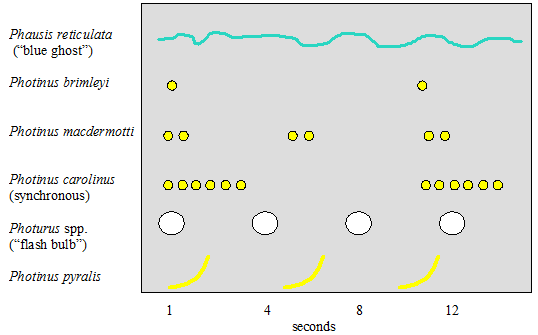|
In Great Smoky Mountains National Park, there are two groups of fireflies. The first group does not flash at all and is active during the day rather than at night. This group includes six species of fireflies. The second group, with about 13 species in the park, uses a pattern of light producing flashes to find and recognize each other. The timing and pattern of these flashes is unique for each species. Park visitors may see several different species of fireflies during the early summer, when male fireflies use flashing to court females. The pattern of flashes of some of the common firefly species encountered in the park are illustrated and described below. Firefly flash patterns commonly seen in the park: 
|
Last updated: January 21, 2023
